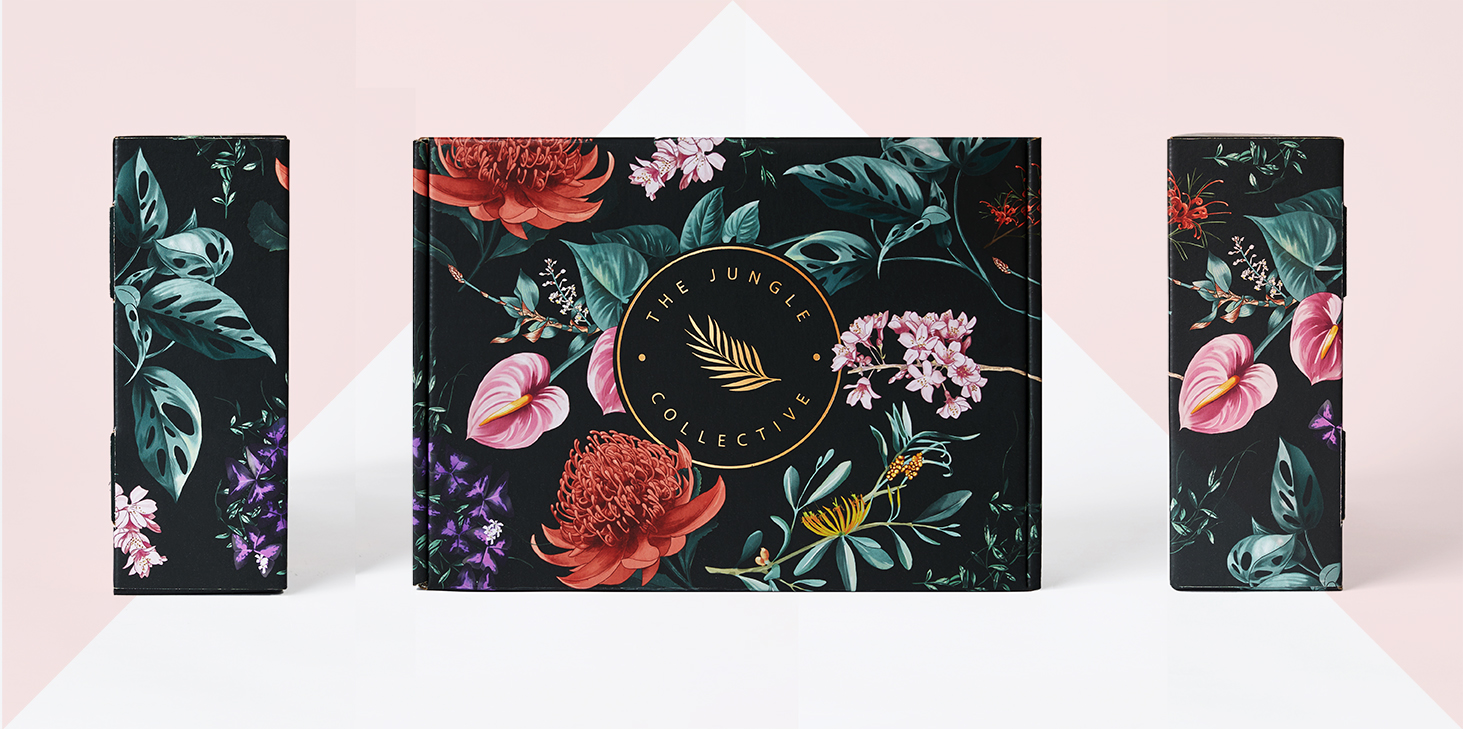
Congratulations on your recent Jungle Box purchase!
Time to lean back, put your feet up, play some feel-good Jungle Bangers & read all you need to know to keep your recent plant babies happy!
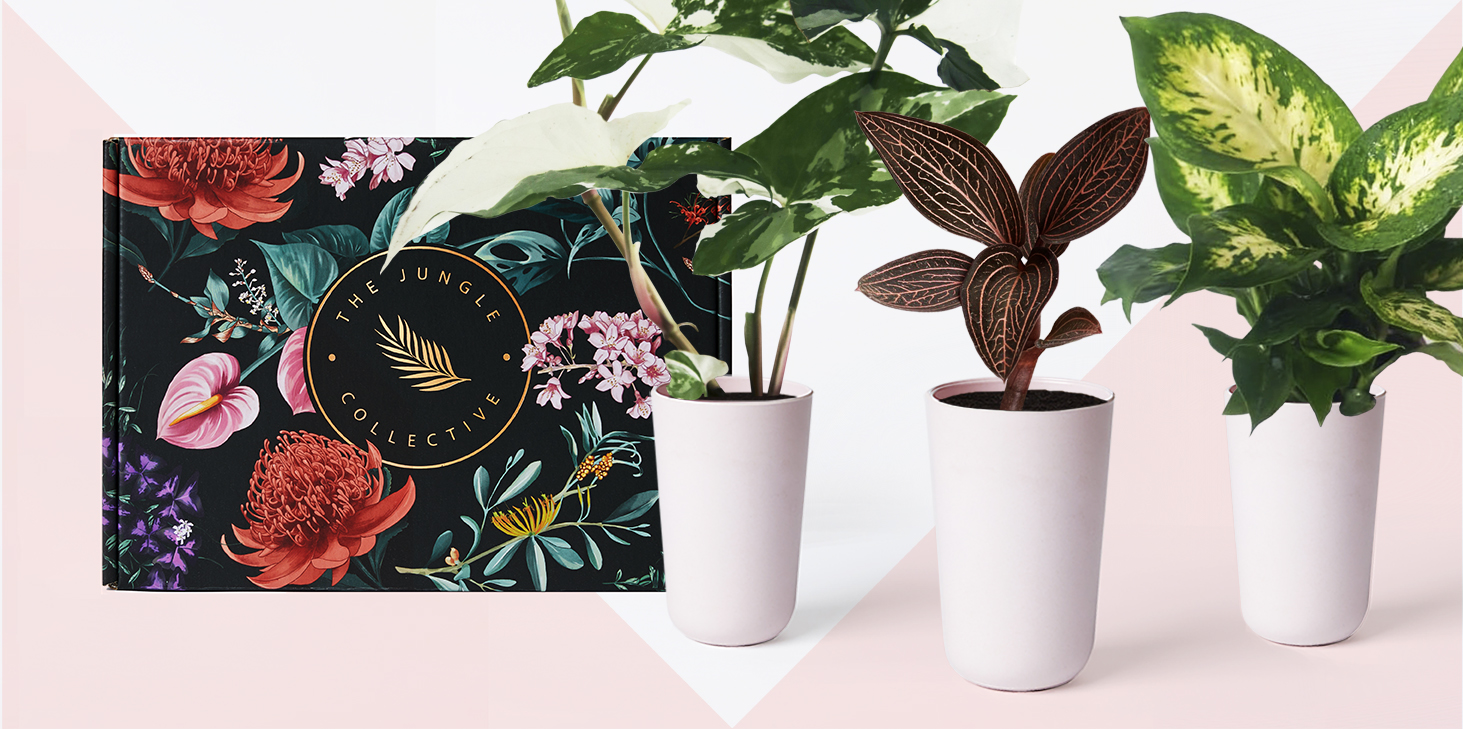
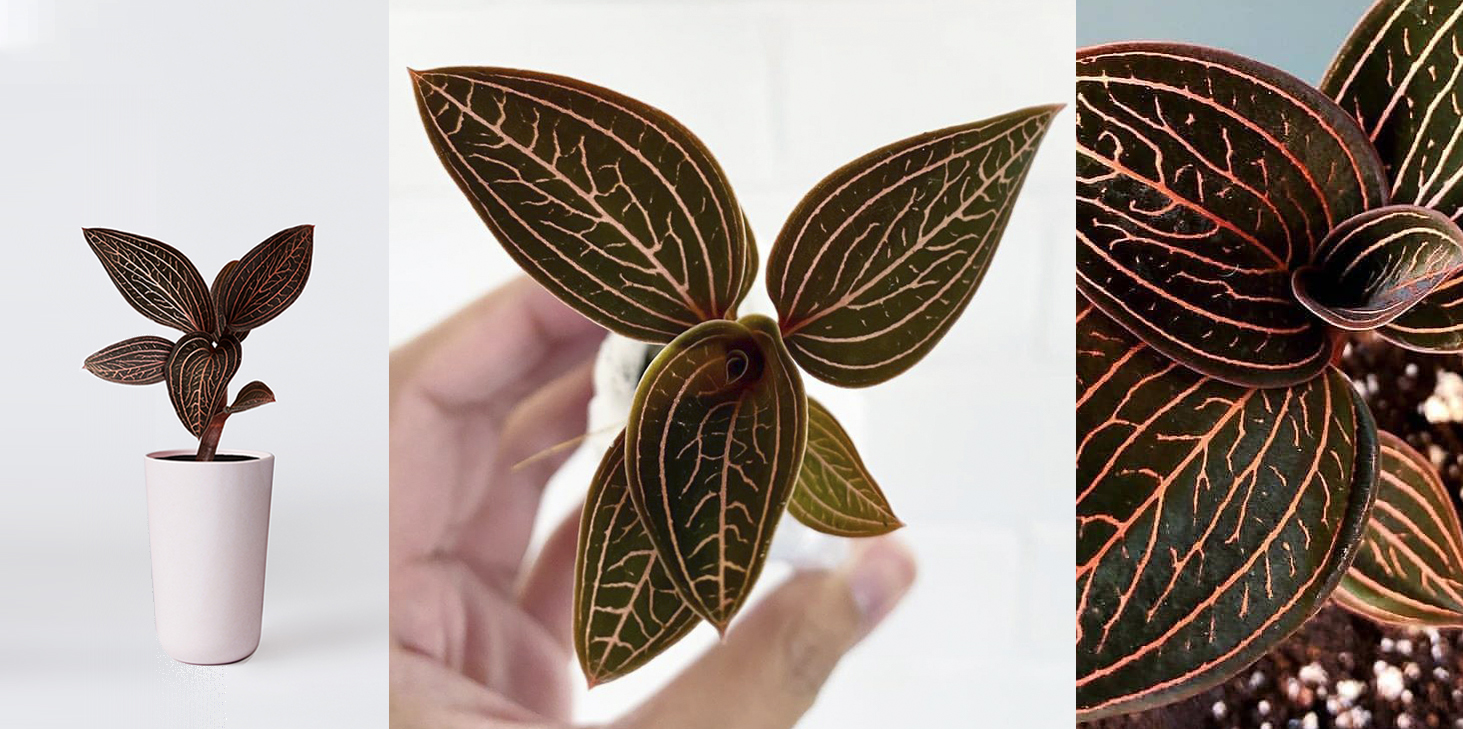
This is a beautiful orchid grown more for its leaves than its flowers, although the white and yellow flowers do make a nice display once a year, usually between June and September. The leaves appear velvety and have fine, light-coloured veins in beautiful patterns. It is a creeping plant that seldom gets more than 15cm tall.
It is widely distributed from northeast India, across southeast Asia and southwest China to Indonesia. It is found on the forest floor in tropical rainforests at around 1000m altitude, so although it comes from the tropics, it is from a cooler and fresher environment than the hot humid lowlands. It experiences regular showers followed by light breezes spring to autumn but less rainfall in winter when it flowers.
It adapts well to indoor culture. It does best in medium indirect light and high humidity, so grow it in a group with other plants or in a terrarium. Because of the creeping habit, it is best grown in shallow, wide pots in a very free-draining but moisture-retentive mix. Water to keep the mix moist from spring to autumn but drier in winter and use a dilute solution of fertiliser. Keep it above about 10°C in winter and below 30°C in summer if possible. Repot in spring when new root growth is starting.
Because of its preference for humid conditions, it is more likely to be affected by rots, mildew, and leaf spots than insect pests, although mealybugs are a possibility.
Jewel orchids are not considered toxic to humans or pets.
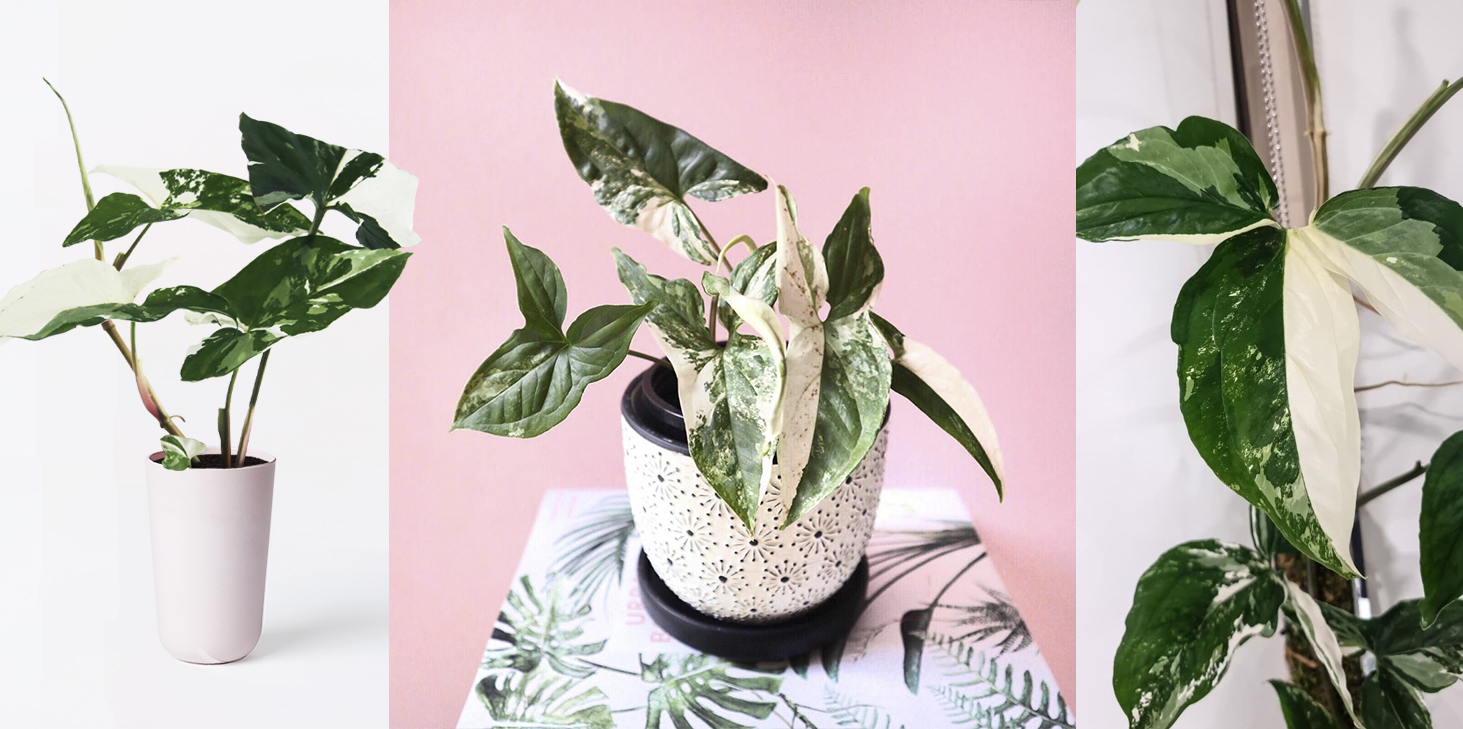
Syngonium podophyllum is the most grown species of the genus with many common names such as arrowhead plant, arrowhead vine, goosefoot or simply syngonium. It is a popular indoor plant because it is so dependable. “Fantasy’ is one of the most attractive and interesting variegated cultivars of this species because each leaf is patterned differently with stunning white variegation. The plant must be propagated from cuttings to maintain the variegation.
If new leaves begin reverting back to full green cut back to encourage new growth from stems with stronger variegation, which will have a higher chance of shooting out variegated leaves.
As far as rare plants go, the Syngonium Fantasy is a low maintenance option, is a relatively fast grower and propagates easily.
Syngonium podophyllum comes from Central and northern South American where it grows as a vine up the trunks of tropical rainforest trees, secured by its roots. In this environment, the plant is rained upon very regularly and fertilised with a very dilute solution of nutrients from decaying plant material above it on the tree. The roots then dry off between rain showers in the gentle breezes.
This means that in cultivation, the plant can either be grown up a support, trailed along a surface or trailed from a hanging basket. It needs to be potted in a free-draining mix that is kept just moist by watering several times per week in summer (or until the soil has dried down a few centimetres) but less in winter. Never stand the pot in a saucer of water. If the soil dries out too much, the edges of the leaves will turn brown. Fertilise regularly but sparingly. The plant grows best in bright indirect light (to maintain the best variegation) with as much humidity as you can provide by grouping your Fantasy with other plants, running a humidifier, or misting the foliage. Dust the leaves monthly to keep them at their best efficiency.
Eventually the vines can become too long to manage easily and then it is time to take cuttings and start new plants or pot back into the mother pot to make a denser display. Cuttings root easily in water or moist soil. Repot every 3 years or so.
Syngoniums are relatively pest-free but occasionally you may encounter spider mites (especially if the humidity is low), or mealybugs.
Like other aroids, syngoniums contain calcium oxalate crystals and are toxic to pets and humans.
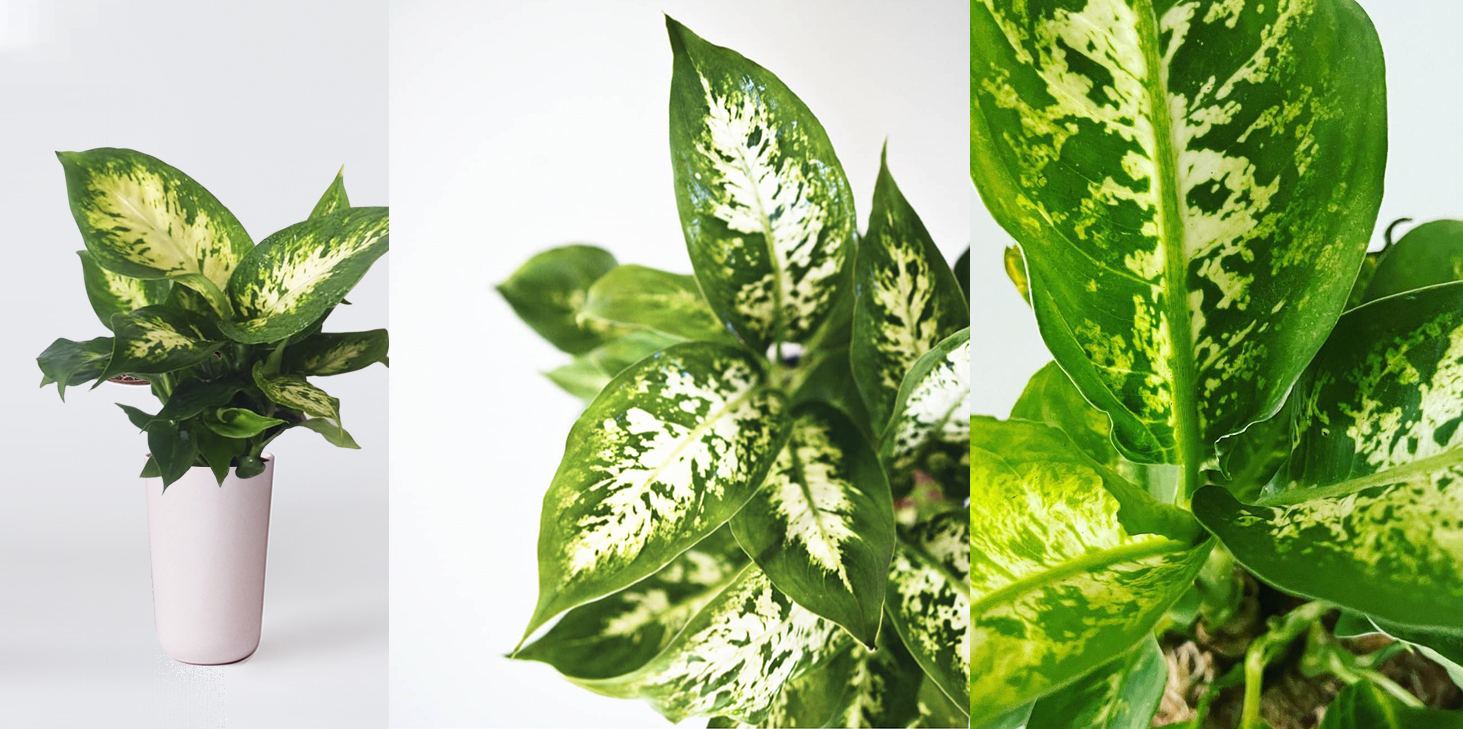
This is very popular and easy indoor plant because it adapts to lower light conditions. It has a straight stem and patterned leaves and makes an attractive feature plant. ‘Compacta’ is a smaller cultivar that readily clumps up and grows to only 50cm high, making it suitable as a table specimen.
Dieffenbachia species are native to Mexico and South America where they are rainforest plants that may grow to 10m high. That said, they are adaptable to indoor conditions. Growth is best in medium to bright indirect light and moderate humidity. However, they will tolerate low light and drier conditions as long as they get enough water to the roots. Water once the top 2 or 3 cm of mix is dry and use a dilute fertiliser regularly while the plant is actively growing. Use a well-draining but water-retentive mix and a large enough pot to keep the plant stable. These plants prefer the relatively stable temperature conditions indoors, and it is best to avoid the temperature fluctuations near heaters or air conditioning vents or external doors, especially in winter.
Fluid dripping from the leaves is a sign that the plant has been consistently overwatered and is in too low light and the plant is ridding itself of excess water by forcing sap from the leaf margins. Make sure the plant is not sitting in a saucer of water, allow the dry down and move the plant to a brighter spot with better air movement.
It is normal for the lower leaves to turn yellow and fall after about a year. However, if there are a lot of yellow leaves at the base of the plant, it is likely that the plant needs more light and less water. Leaves with curled or brown edges are a sign of excessively dry conditions. The best leaf patterning is generally achieved in medium to bright light. Too little light and the leaves turn more solid green. Too much light and the leaves may not develop enough green tissue and look bleached.
Dieffenbachias are attacked primarily by spider mites and mealybugs. Wipe the leaves monthly with a soft damp cloth to remove the dust that favours the development of mite populations.
Like all the aroids, dieffenbachias are toxic to humans and pets. Excessive consumption of any plant part can result in excessive drooling, painful swallowing, respiratory distress, and loss of speech (hence the common name dumbcane). Sap on the skin can produce dermatitis.
(Epipremnum Cebu Blue, Variegated Wax Ivy & Philodendron Birkin)
(Syngonium Fantasy, Calathea Insignis & Fittonia Firetail)
(Scindapsus Pictus Argyraeus, Calathea Ornata, Rhaphidophora Tetrasperma)
(Ludisia Discolor – Jewel Orchid, Syngonium Fantasy, Dieffenbachia Compacts)
With more than 50,000 happy online customer orders fulfilled, we pride ourselves on hand delivering the best quality plants to your door. As a living thing, incidents can happen though so if any item arrives

damaged or not to your satisfaction please notify us within 7 days of delivery, and we will offer you a replacement, refund or credit. We’ve got your back! Click here to read more about our Guarantee.

With more than 50,000 happy online customer orders fulfilled, we pride ourselves on hand delivering the best quality plants to your door. As a living thing, incidents can happen though so if any item arrives damaged or not to your satisfaction please notify us within 7 days of delivery, and we will offer you a replacement, refund or credit. We’ve got your back! Click here to read more about our Guarantee.
2Add Desiginer pot discover